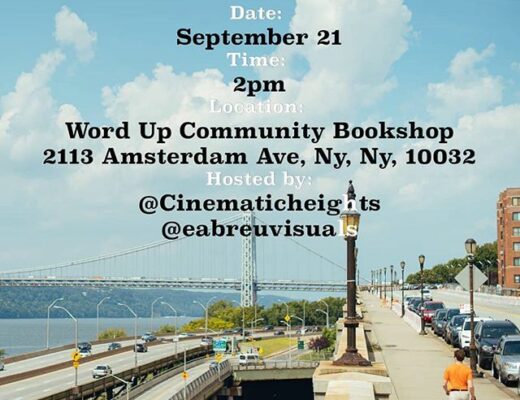BY Robert W. Snyder (@robertwsnyder)
Photography: Emmanuel Abreu (@EAbreuVisuals)

“Broadway Blues” was indeed a “A Frank Discussion of Race, Class and Gentrification in Washington Heights and Inwood,” but as an honored panelist I came away from our deliberations dismayed by the rancor that has erupted uptown and convinced that current proposals to curb rising rents in northern Manhattan are inadequate.
To preserve upper Manhattan as a place where low and moderate-income people can make a home, residents and elected officials must mobilize as many allies as possible. They must also figure out how to expand the supply of affordable housing.
Neither task is easy, but there is a lot at stake.

In a neighborhood where Broadway has long been a boundary line–first between whites and blacks, then Irish and Jews, then Dominican-born and US-born, now affluent and lower income—housing campaigns need people from both sides of Broadway. Prejudices and ignorance can appear on both sides of the avenue, but they should never be tolerated, perpetuated or encouraged.
Learning to find allies on the other side of Broadway has always been difficult. But from crime and policing to housing rehabilitation to school construction and parks, successful campaigns uptown have always succeeded by mobilizing all sectors of the neighborhood.

As hard as it will be to get everyone into the struggle, it is even more important to figure out what people will be fighting for. In a neighborhood where landlords are waging war on legally protected affordable housing, at minimum the rights of tenants have to be protected.
(Go to http://www.nyshcr.org/forms/rent/ for the state agency that deals with tenant rights and rents. For information about affordable housing and housing conditions, go to the New York City Department of Housing Preservation and Development http://www1.nyc.gov/site/hpd/index.page)

But preserving the current stock of affordable housing in northern Manhattan will not, by itself, solve the problem of gentrification.
The population of New York City is growing. With an increasing number of people competing for a limited amount of housing, the costs of housing are bound to rise.

The De Blasio administration’s efforts to require more affordable housing in exchange for market-rate construction are well-intended. I fear, however, that they will be a drop in the bucket. They might slow the march of rent hikes and displacement, but my big concern is that they won’t stop them.
Doing nothing is not an option. The rejection of one proposed development or another might fend off the problem for the moment, but sooner than later other market-rate developers will return.

The real solution—easy to say, but much harder to accomplish—is to build a lot more affordable housing than anyone has proposed. I am well aware of the obstacles to doing this.
But unless we figure out a way to build more affordable housing, we are accepting the end of northern Manhattan, and ultimately much of New York City, as a home for low and moderate income residents—-the immigrants, strivers and workers who keep the city running and give it the passion, energy and creativity it needs to thrive.

Washington Heights and Inwood are not alone in their troubles. Other neighborhoods are grappling with the same problems. Moreover, high housing costs are an issue in prosperous cities all over the United States. (And in countries, like Britain and Canada.)
Washington Heights and Inwood face huge challenges, but the fight isn’t over yet. There is even a chance of coming out of this in good shape—as long as people think big and work on both sides of Broadway.

Click below for audio of the panel.
Robert W. Snyder is a professor of Journalism and American Studies at Rutgers University-Newark. He is the author of Crossing Broadway: Washington Heights and the Promise of New York City (Cornell, 2015).
We invite you to subscribe to the weekly Uptown Love newsletter, like our Facebook page and follow us on Twitter & Instagram or e-mail us at UptownCollective@gmail.com.



